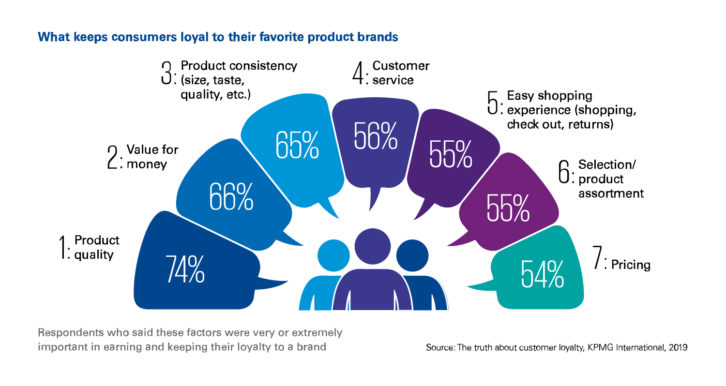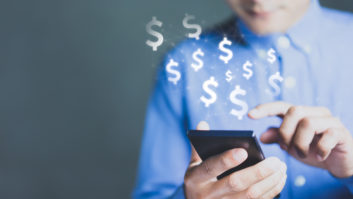
By Anthony Savona
Digital disruption and new generational influences are making customer loyalty tough to hold onto these days, but fresh thinking on loyalty programs is key to winning and retaining customers, according to KPMG International’s The Truth about Customer Loyalty report.
With the holidays near, KPMG’s survey of over 18,000 consumers in 20 countries explores the nature of customer loyalty and how some traditional loyalty programs, long a mainstay of customer retention strategies, may not be keeping consumers brand-faithful.
Given the huge online success of events such as Black Friday, Cyber Monday, and e-commerce giant Alibaba’s recent record-setting $38 billion in sales on Singles’ Day, loyalty platforms, when done correctly, show promise for enhancing customer loyalty.
“Despite massive digital and consumer-driven disruption in the retail sector, and the resulting need for a laser focus on customer centricity, it’s ironic that many customer loyalty programs today haven’t changed much,” says Paul Martin, head of retail, KPMG in the U.K.
“Our research shows that 75 percent of consumers would switch brands for a better loyalty program,” he adds. “Retailers who are serious about customer centricity need to ensure their loyalty programs are in line with the expectations of their customers. And today’s consumers like to interact with an ecosystem that covers payments, fulfillment, social media, etc., as this can drive value, convenience and a positive experience. And that’s a platform experience.”
What Engenders Brand Loyalty Today?
Brand loyalty doesn’t only earn companies repeat business from their loyal customers — over 86 percent of consumers, from Gen Z to the Silent Generation, say they would recommend a brand they loved to friends and family.
In terms of earning customer loyalty, 59 percent of the consumers surveyed said they are loyal to their favorite brand because of a personal connection. Seventy-five percent said their loyalty was driven by product quality, 66 percent said value for money, and 57 percent, customer service.
Meanwhile, only 37 percent see loyalty programs as an effective way to earn their loyalty. And 55 percent of consumers who are enrolled in loyalty programs use them infrequently — a few times a month or less. Ninety-six percent of the Millennials surveyed said companies need to find new ways to reward loyal customers altogether.
Four Ways to Enhance a Loyalty Program
“Our research tells us that the top-three valued benefits of loyalty programs are cash back or discounts, special pricing, and the ease of earning and redeeming rewards,” says Katherine Black, principal, strategy, KPMG in the U.S. “But the stakes for winning loyalty now are much higher; to remain competitive, retailers must consider mixing it up, throwing in a bit of novelty, personalizing offers, and showing they know their customers through a great experience, whether online or in-store.”
Here are KPMG’s four recommendations to improve customer loyalty programs:
1. Revitalize them. Around half of consumers agree that companies should find thoughtful ways to reward loyal customers. Responsible personalization, emotional connection, and purpose-driven causes should be key considerations.
With advanced analytics and artificial intelligence, loyalty platforms and personalization will help retailers get more intimately familiar with customer preferences. In China, 36 percent of consumers appreciate personalization. Similarly, consumers in Italy (20 percent) and France and Mexico (16 percent) value personalized service.
Nevertheless, consumer concern about data privacy calls for conscientious thinking about where and when to use personalization. In Germany, a quarter or more consumers are not part of a loyalty program because they don’t want purchase behavior tracked (25 percent) or to share personal data (28 percent). Globally, one in six who do not belong to a program is due to a reluctance to share personal information.
Emotional connection is also key: six out of ten consumers are loyal because they have a personal connection to a company that, for example, commits to innovation, a charitable cause, and/or the environment. Sustainability and purpose-driven causes engender loyalty across Gen Z consumers and Millennials, especially in emerging and high-growth markets including China, India, Mexico, Thailand and South Africa where between 40 and 60 percent of respondents would be loyal to a company that commits to sustainability
2. Keep it simple. Make loyalty programs easy to join and simple to use. Globally, 60 percent agree loyalty programs are too hard to join and/or earning rewards is a challenge. Eighty percent in Brazil and China feel that way, as do nearly seven out of ten Millennials. Lengthy registration processes, rules and conditions, technical difficulties with redeeming awards are all likely to turn customers away.
3. Maintain relevance amid the noise. Retailers need to ensure their loyalty programs stay relevant to customers. Forty-nine percent of loyalty program members globally agree they belong to too many programs. This is particularly the case for consumers in China (72 percent), Brazil (70 percent), and India (61 percent). Too many programs equates to too many apps, so it’s no surprise that customers forget their memberships, lose track of their points, and perhaps decide that the rewards are not worth the effort.
4. Promote awareness and familiarity. Regular communication to consumers through social channels, email, or advertising can help programs remain top of mind with consumers. More than one in three consumers who did not belong to any loyalty programs said they were not aware of any. Sixteen percent globally have not joined a program.
SOURCE: KPMG International













